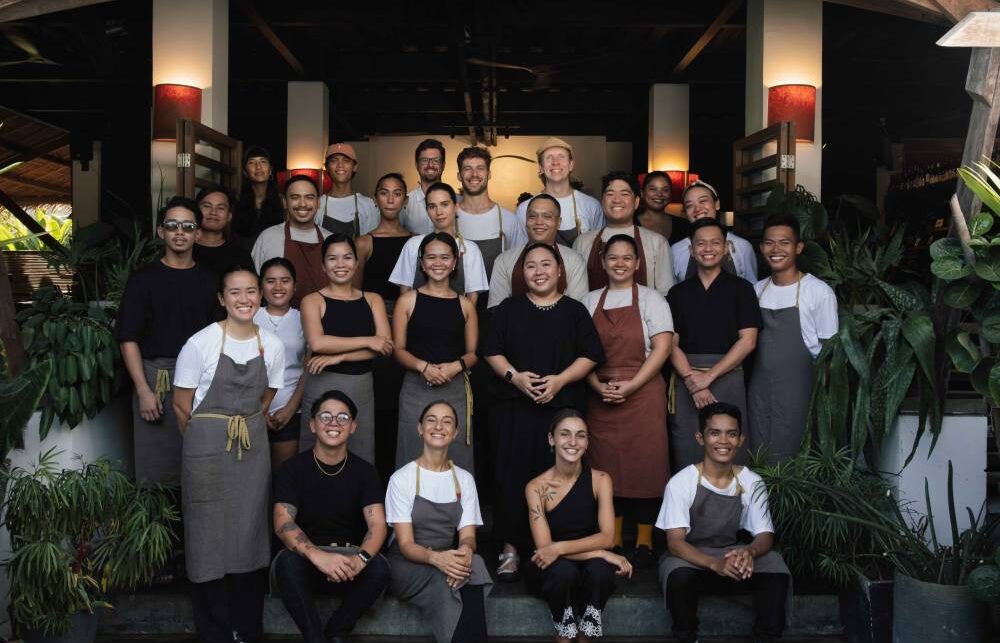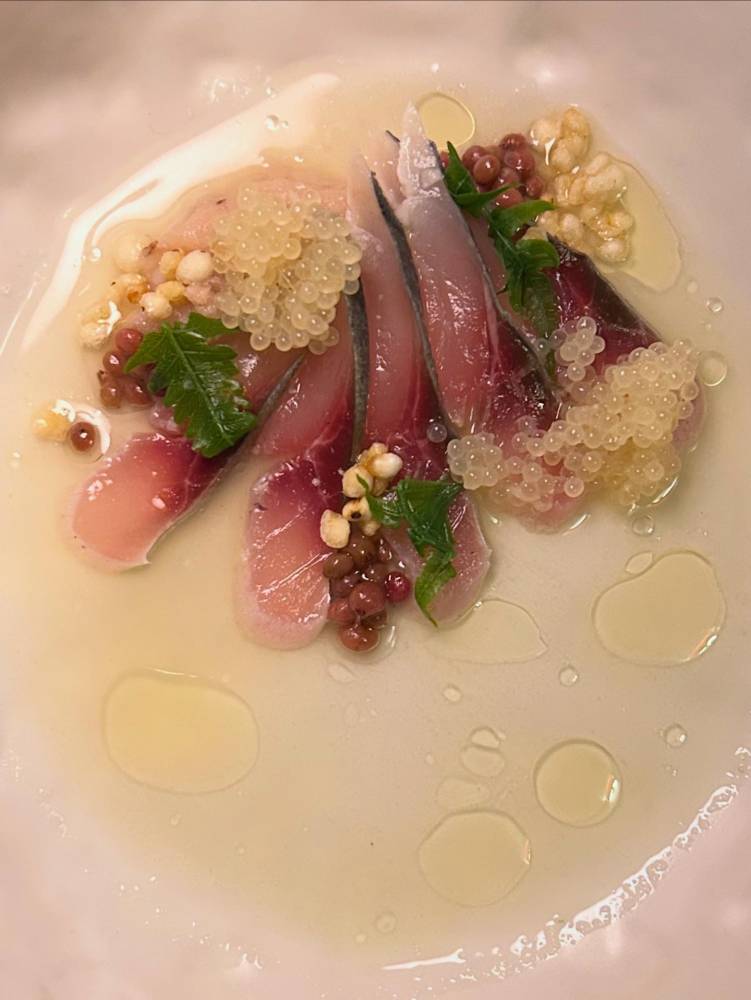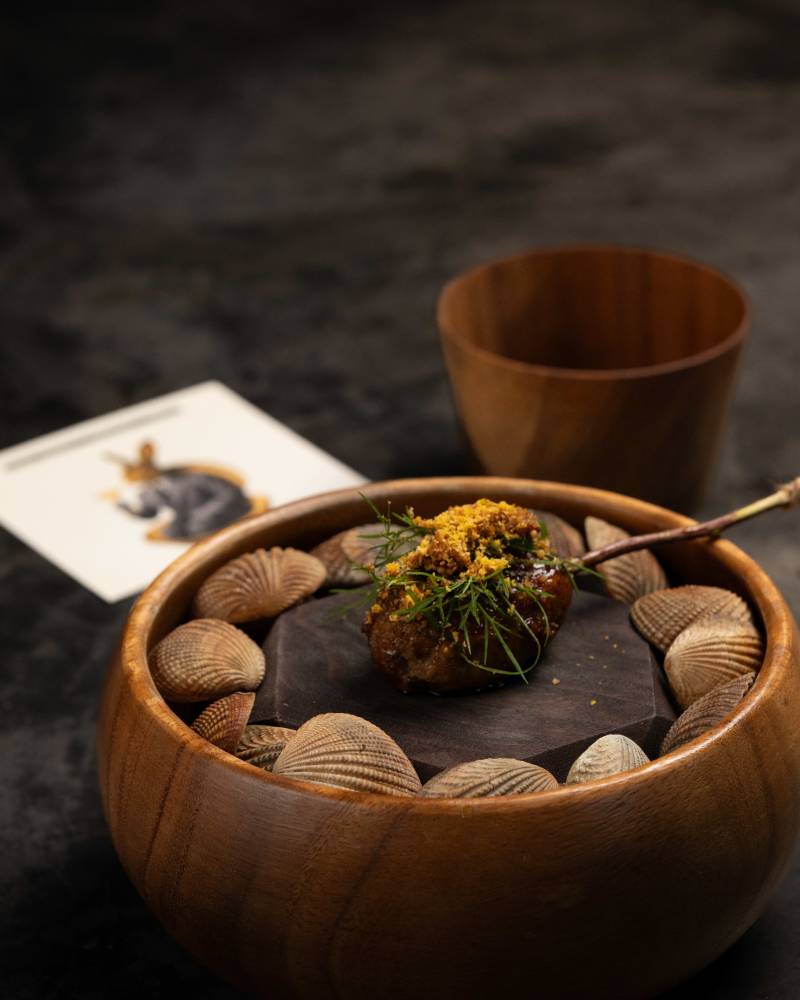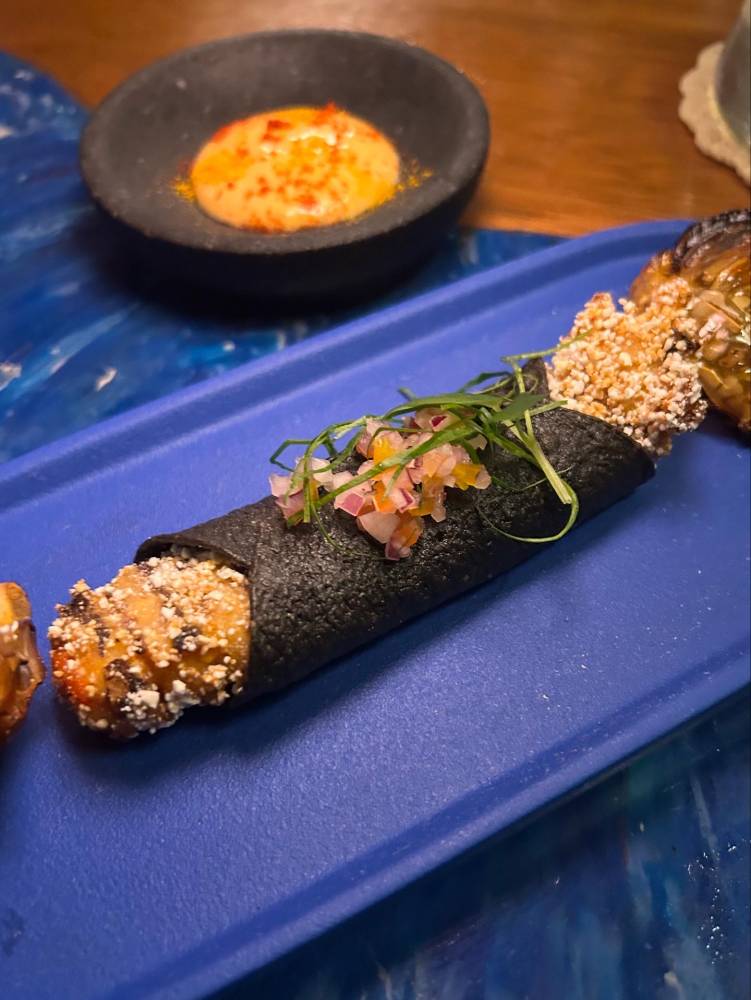Roots x Hapag: A delicious reunion on Siargao island

At Roots, everything is intentional—from the tables inlaid with recycled plastic sheets and the wooden hand installation on the main wall that showcases the season’s ingredients, to the team’s sustainable ethos, and even Kaos Table, their noble collaborative series that aims to foster creativity in the realm of gastronomy.
Ricardo Miranda de Sousa, one of the five founding members of the brand, says that “collaborations offer a unique opportunity to exchange knowledge, visions, and experiences. They open windows into diverse approaches to gastronomy and serve as bridges that connect cultures, philosophies, and people.”
“For us, they are also a way to position Siargao—its ingredients, farmers, and fisherfolk—on the world map of gastronomy, highlighting the island’s unique biodiversity and landscapes,” he adds.
For the third installment of Kaos, Roots flew in the team from Hapag, with whom they had the privilege of working with in Manila when they staged a two-night dinner last February. “They approached us and said that they were interested in doing a collaboration. It was around the same time when we were also already thinking of them to do something, too,” says Marina Castañeda, the brand’s director of art and design.
For their turn, they also toured Hapag’s Thirdy Dolatre, Erin Recto, and Kevin Navoa to the north of Siargao (early this year, they brought Roots to Kai Farms), kayaking through the mangroves of San Isidro alongside local guides, and visiting Ihayas Farm in Del Carmen to learn about its regenerative organic farming model—a project driven by the local NGO Lokal Lab.
“We have similar stories,” says Sousa. “We both started from humble beginnings and built our visions with deep respect for local ingredients, which play a critical role in both our approaches to food. The energy the Hapag team brings is truly contagious. Their passion, creativity, and relentless pursuit of expanding the horizons of Filipino cuisine are not only inspiring but also offer a meaningful opportunity for us to better understand our host country through its food.”
He adds, “It has been a privilege to have front-row seats to Hapag’s remarkable journey—witnessing how they champion local ingredients, elevate regional narratives, and continuously redefine what it means to cook Filipino food today. Collaborations like this open doors to deeper cultural understanding and offer a shared space where mutual respect and learning flourish.”
A taste of Mindanao in Siargao
It is this, their commonalities, that make their tandem work. And it could be seen—and tasted—in their menu. Whereas in Manila, Roots chefs Inés Castañeda and Filippo Turrini prepared plates that showed the essence of their restaurant, back on the island, they created new ones to match Hapag’s repertoire, which was derived from their Mindanao tasting menu.
Take, for example, their version of the Caprese salad, inspired by the Okinawan jimami tofu. It was composed of a creamy, plant-based “mozzarella” made of pili nuts from Bicol, a purée of dehydrated heirloom tomatoes from Davao, oven-roasted watermelon cherries to mimic the look and sweetness of tomato, Thai basil leaves, and ampalaya oil for subtle hints of bitterness. It was finished on the table with a grating of asin tibuok from Bohol by Daan Overgaag, the director of community engagement at Roots.

Their plates may look simple, but a lot of thought and technique went into them—like the horse mackerel that was cured in local lime. The guyabano leche de tigre, which came as a translucent pool of water extracted from the fruit’s pulp. The endearing aroma was from an oil prepared using guyabano leaves, while puffed adlai added texture and notes of sourness from the pickled inyam from Siargao Organics that was treated like capers. The whole dish was then crowned with fish roe from a native fish called bayu.

They also sent out tsukune, but instead of the traditional chicken, flavorful rabbit from Agriya by Damosa Land Farm in Davao was used. The ground meat was shaped into meatballs that clung onto skewers and glazed with a mix of rabbit demi glace and reduced tapuey from Ilocos Norte. Chicharrón made from rabbit skin added a most welcome crunch. Completing the surf and turf was a warm bowl of potent broth from cockles, sourced from General Luna. No salt was added, allowing for its naturally seasoned goodness to come through.

It was succeeded by fried mantis shrimp tacos—composed of squid ink tortilla made from a native corn called tinigib, kadyos puree, and a rich hollandaise using a reduction made from the shrimp heads.
To cap the meal, Roots produced a beehive-shaped cake made with wild honey from Bataan, the cavities of which were filled with white chocolate namelaka—infused with endemic cinnamon, a creamy sabayon made with 15-year-old rum and honey, and a local cherry marmalade.
Hapag had four dishes—three of which were derived from their current Mindanao menu, namely the siyagul (swordfish cooked in burnt coconut and served on a tinapa cracker), agal-agal (salad with tuna kinilaw), and riyandang (Maranao-style beef stew cooked low and slow in coconut milk and toasted spices). Their dessert was a taho panna cotta with mulled wine, sago pearls, and fresh strawberries.
The first time I had a meal in Roots a year ago, I remember being impressed by their promise. I knew then they had potential and had a lot more aces up their sleeves. This collaboration realized that promise as it duly showed the breadth and capacity of their technique, talent, and creativity.
Roots is located along Tourism Rd, General Luna, 8419 Surigao del Norte. Contact 0967 133 3146
Angelo Comsti writes the Inquirer Lifestyle column Tall Order. He was editor of F&B Report magazine.

















